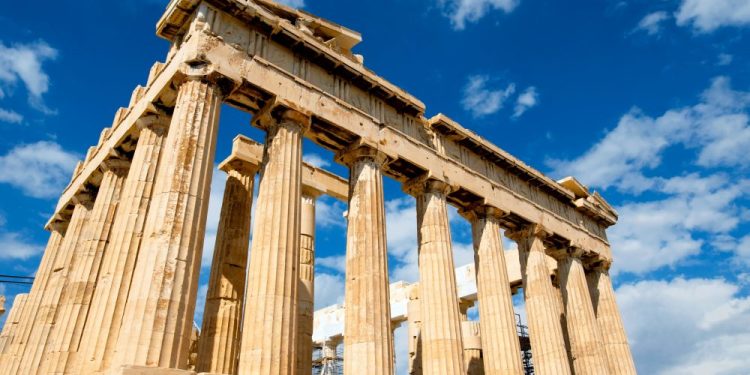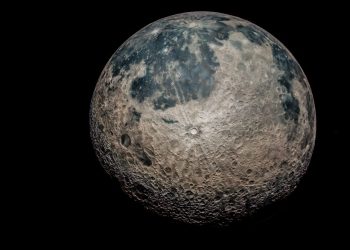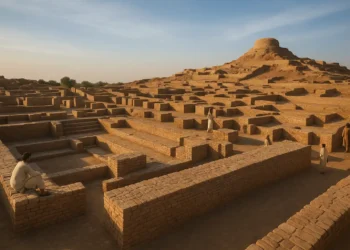No matter where you live, it is unusual not to be aware of the monumental treasures that have glorified the Greek empire for more than 2,000 years. The richness of Greek culture has provided the world with some of the most impressive monuments in human history.
The notion that the Greek culture and the monumental history of the country are monotonous can be considered a lie, and an even bigger lie is that the Ancient Greek civilization should be remembered only for the masterpiece monument in Acropolis.
10 Ancient Greek Monuments That Influenced History
The spirit of a new civilization was entrenched in the mentality of many cities in the Greek world and historical monuments such as Knossos Mycenae, Olympia, and Delphi. This article shows the origin of various ancient Greek monuments and raises awareness of the context in which they were built, why they had their shape, and their importance for Greek and global history.
Acropolis
For the reasons discussed in the introduction, the Acropolis, the heart of Athenian and Greek cultural history, must be in the first place on the list. Greece would not have such an iconic presence in the contemporary context and a fundamental role in the history of the world if it were not for the masterpiece found in the center of the capital, Athens.
Inside the temple, you will find some of the most iconic monumental creations of the ancient Athenians and Greeks, such as the Parthenon, the Propylaea, the temple of Athena Nike, the Erechtheum, and the Caryatids.
Acropolis was built in the Golden Age (5th century BC) when Pericles was the leader of Athens. This period was not limited to the financial growth that the city was going through. However, it was related to a great promotion of all the glorious cultural aspects that were going on. This is why you will find great monuments connected to the theatres of Dionysos and Herodes, the Areopagus, and others. That said, the Acropolis’s importance for honoring the 12 Gods must be underlined.
The fact that the Acropolis contains such a variety of temples, theatres, creations, and other glorious buildings is why it is one of the most magnificent monuments in the “12 wonders of the modern world” list.
Ancient Agora
Ancient Agora was the heart of the government, the judiciary, the public debate space, and the Athenians’ marketplace. It played a central role in developing a democratic system during the Golden Age of Greece. Each Citizen had the right to speak and vote by showing their hand or choosing to deliver a speech.
Agora had a political, economic, and cultural influence in Western Civilisation and enabled Greeks to interact more intensely than Acropolis did. Although they are sometimes referred to as one, Acropolis and the Agora were served different purposes.
The ancient Agoras development starts during the 6th Century BC. The Persians burned the developed Agora a century later, but the Greeks had planned to rebuild it again. Then, in 270 AC, Agora was abandoned, and after consecutive years of construction and destruction, most of the monuments were buried under mud. In the mid-19th century, the Area was urbanized as the modern Greek state was created. Excavations took place until the 20th century.
Ancient Olympia
After analyzing the significance of the Acropolis for religious purposes and the honoring of Zeus, the archeological site of Ancient Olympia was another excellent place for honoring the religion. Even though there were many statues and temples for the Gods, Ancient Olympia is often considered sacred to Zeus as the father of gods and humans. The temple was attractive to visitors worldwide, which was innovative since, around the 5th century, people were only visiting Ancient Athens.
Many historians have defined Ancient Olympia as one of the “Panhellenic” centers that built the ancient Greeks’ identity as one of the greatest empires in the world. Ancient Olympia is not only crucial for the temples and religious purposes, but it was also the first place in which the Olympic Games are said to have taken place, through the period of classical antiquity, from the 6th up to the 4th century. In honor of their history and origin in ancient Olympia, the Olympian Games were restored globally in 1894. Even in the contemporary world, they have roots in the ancient Greek context.
Mycenae
The Mycenaean civilization is dated even earlier than the Athenian and Spartan empires that had been the leading creators of the previous monuments. An essential Mycenaean characteristic was the palaces they lived in. It’s outstanding to see the wealth and how it was portrayed through the palaces and the luxurious homes in the northwestern Peloponnese.
The Mycenaeans were considered the first people who migrated to the Greek mainland around 1,700 BC, during the late bronze age. There were many Mycenaean kingdoms in Greece and in Crete.
The Mycenaeans had built a hierarchical system of people developing extensive trade networks with more powerful kingdoms to the East. Historians understand that they were one of the first economically powerful communities, and probably, this is why we have the buildings and the luxurious establishments of palaces and other places.
There are accounts of the ancient world that are showing Perseus, the son of Zeus and Danae, to have founded and developed the palaces and the civilization of Mycenae. Nonetheless, this is based on mythology and stories of Homer and other tragic poets, since the story goes that Perseus let Cyclopes build the palace walls since no human could lift these stones.
Delphi Oracle
This is probably one of the essential oracles and monuments that have been preserved, and there is a whole history of internationalizing the Greek territory behind the place of Delphi. Even with the Parthenon, the temple of Zeus, and Acropolis on the list, this is the most sacred place in ancient Greece. In the Oracle, Pythia informed the people about what the future held. The efficiency of the oracle and Pythia’s prophecies contributed so that Delphi became global. As a result, the oracle gave the Greeks a strong identity, even before their dominance in the Mediterranean.
One of the main characteristics connected to the oracle of Delphi is Panhellenism, which is the idea of sharing the greek culture beyond the region of the societies. People that visited the oracle and the temples of Phocis were either traders or aristocrats. Sacrifices and rituals were some of the processes organized in the oracle. Researchers had suggested that this was when the Greeks understood that they had similarities, despite living on different sides and thousands of kilometers away in mainland Greece.
Ancient Epidaurus
It is probably the most important monument on the list in terms of the art development during the 6th and 5th century BC. The theatre of the ancient Epidaurus was close to Argos but independent from it until the Romans came and dominated the Hellenistic territories.
The citizens of Argolid founded Ancient Epidaurus, during the 6th century BC. However, this is where it gets exciting when it comes to the name Epidaurus. People have always aligned their thoughts about Epidaurus with only a theatre and the prosperity of the arts. Nonetheless, this will be analyzed later, since Epidaurus included a sanctuary, healing centers, and some smaller oracles before being an artistic place. More specifically, the first thing Epidaurus was known for in the wider Greek world was the sanctuary, about 5 miles from the town of Argolis.
This is why the original name of the monument is Sanctuary of Asklepios at Epidaurus, a detail that most people have always disregarded. The Asclepeion was the most important and well-known healing center of the classical world for many, and it was located a couple of kilometers away from the famous theatre of Epidaurus. Asclepius was a healer god of antiquity, and he worked intensely to develop the sanctuary in the 4th and 3rd centuries BC since he contributed to enlarging and reconstructing the establishment.
During the Hellenistic period, the story was not any different for the center, and the large numbers of people that were cured continued this prosperity. Epidaurus’s theatrical art is crucial until today, and the monument still works. Argolis is still an attractive place for a wider audience. The theatre was designed by Polykleitos the Younger in the 4th century BC. The theatre’s design makes its acoustic experience significantly exceptional, which is why, in antiquity, the theatre had a total capacity of 14,000 people.
Minoan Palace
The Minoan palace in Knossos is the most significant archeological site on Crete and one of the oldest palaces in the European continent. It was created even before the Bronze period, in the Neolithic ages, when Knossos survived great destruction on the whole island of Crete.
The Minoan civilization, along with the Mycenaeans, was the oldest community ever to step foot into the land of today’s Greece. According to Greek mythology, the palace was built by Daedalus. Although the first settlement dates back around 7,000 BC, the creation of the palace is dated around 2,000 BC.
Not only is the monument astonishing, but it is more than interesting to see how the establishments of the Minoans and the Mycenaeans from 5,000 years ago have been preserved and maintained after all these years. Greece has some of the most important monuments from this era. The reason for the death of these civilizations is still unknown. However, these historic buildings can explain the destruction if the excavations and research continue.
Dion
The sacred archeological park of Dion is only dedicated to one God. However, it’s spiritually devoted to Zeus, but many other sanctuaries are dedicated to Demeter, Asclepios, Zeus Hypsistos, Isis, Zeus Olympios, and Vaphyras. This settlement does not date to the early years of the Greek world. It had been designed, built, and developed around the age of the Hellenistic and Roman periods.
As mentioned before, the outstanding characteristic of this archeological site is its diversity and the history it portrays through the different aspects covered by the buildings. Although you see sanctuaries as a way of honoring the gods of Mount Olympus, you also see Macedonian Tombs and graves with burial objects such as jewelry, golden coins, glass bottles, and other things that are researched up until this day.
On a general note, the markets, the churches, the thermal baths, the villa of Dionysus, the houses, and the city walls were all excavated. They portrayed the richness of the historical culture in this period and territory.
Vergina
This is the first monument on the list located in the Macedonian territory. It has been considered a gem of the ancient world and the empire that Alexander created and developed. Vergina has many graves from the Macedonian ancestors, although many think this is a sacred archeological place solely for Alexander. The prime example is the “Tomb of Philip” at Aegae (modern Vergina), where archaeologists found skeletons and grave goods.
Although there is still a debate about whether this is the tomb of Philip II, the fact that this is not the only tomb shows that other family members of the Great Philip and Alexander dynasties have been buried there. Archeological websites have even been vocal that the underground museum should be among the current wonders of the world for its exquisite gold finds and rare paintings. Until today, Vergina provides one of the most critical and vital centers of Alexander’s conquest, giving us great insight into how the people were honored after their death.
The Temple of Poseidon
At the southern territory of the Attica state, we have the Cape of Sounion, the Poseidon temple designed and constructed in 440 BC. This temple belongs to the list of significant monuments built during the Golden Age of Athens. It was designed with a Doric temple that looks over the sea at a height of almost 60 meters. The story behind the temple of Poseidon did not have a great beginning.
The temple built in the Archaic period was destroyed during the Greek-Persian wars when Xerxes invaded Athens. The accounts show that Poseidon, the God of the sea, was honored with the temple. After Xerxes destroyed the temple of Athena and other temples of the Acropolis, he was defeated in the naval Battle of Salamis.
Join the discussion and participate in awesome giveaways in our mobile Telegram group. Join Curiosmos on Telegram Today. t.me/Curiosmos
References
John Boardman, Jose Dorig, Werner Fuchs and Max Hirmer, The Art and Architecture of Ancient Greece, Thames and Hudson, London (1967),
Banister Fletcher, A History of Architecture on the Comparative method (2001). Elsevier Science & Technology. ISBN 0-7506-2267-9,
Helen Gardner; Fred S. Kleiner, Christin J. Mamiya, Gardner’s Art through the Ages. Thomson Wadsworth (2004), ISBN 0-15-505090-7,
Higgins, MD and Higgins, RA, 1996, A Geological Companion to Greece and the Aegean Cornell University Press. ISBN 0-8014-3337-1,
Henri Stierlin, Greece: From Mycenae to the Parthenon, Taschen, 2004,
Marilyn Y. Goldberg, “Greek Temples and Chinese Roofs”, American Journal of Archaeology, Vol. 87, No. 3.











